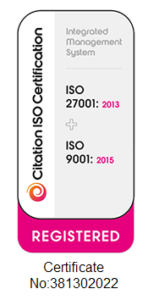Where is the Value? The What, How and Why of Virtual Exhibition Booths
“Quiet people have the loudest minds.” – Stephen Hawking
Meetings, symposia, congresses and conferences have all moved to the virtual world – many quite successfully.
The situation, however, is a lot less certain when it comes to exhibitions. That’s because sponsors need to know the value of those virtual stands if they are to invest in them.
Uncertainty is a huge issue for meeting organisers, which depend on the revenue from exhibitions to support the programmes that are continuing to attract delegates. For the sponsors, that uncertainty translates into “Am I getting value for money?” If sponsors don’t feel they are, they won’t invest – and that is a problem.
As conference researchers, what we at Time Research understand is that knowing why delegates visit conferences and stands, what they remember and how those learnings affect behaviour change are integral to developing engaging, well-attended exhibitions.
The problem we’re finding is the data about virtual conferences has not been forthcoming. It’s likely meeting organisers are nervous to release or even gather this information, but without it they won’t know what the challenges are, and how to deliver value in the future. Organisers should be able to say how many delegates went to the virtual exhibition hall, how many visited each exhibit stand and whether those visitor numbers vary according to exhibit size, which may not necessarily be the case in virtual stands.
Is the spend worth it?
Let’s start with what we do know. We know from our own experience that in the physical space, visitors attend the exhibition hall for a variety of reasons. Some are just there for a coffee and a bite to eat, but many doctors like to attend a “meet the expert” session or watch practical demonstrations. Others are there to connect with colleagues, or when collaborating on clinical trials, to liaise on developments in their own countries.
We also know that the charges for virtual booths are lower than for physical sponsorship. For example, one client that would normally spend as much as $1 million to have three sponsored symposia and an exhibition stand is paying a third of that amount for the same in the virtual space.That’s obviously a lot less, but if they aren’t getting the delegates is it value for money?
It’s therefore incumbent on meeting organisers to ensure they are providing value for sponsors and exhibitors.
But to do that, they need data to answer crucial questions: How many visitors are attending the virtual conference? How does that compare with a physical meeting? Which booths are they visiting and why? And for those who don’t visit, why not? And what can we do to encourage and motivate them to visit?
In the physical space, we know that certain attractions, such as a coffee cup with your picture on it, can draw attendees to a booth. The industry needs to start thinking creatively in the virtual space. For example, could we offer a passport system where you visit 10 stands, get a stamp from each booth you attend and once you’ve visited 10 booths the organisers make a donation to a charity? Would that work? Organisers need to ask delegates to get that answer.
Once delegates are at a virtual exhibition, sponsors then need to understand how they can get people to their virtual stand. How can they engage with conference attendees? How do those visitors want to engage?
Companies are already investing in innovative ways to reach out to audiences, such as virtual exhibits and processes for engaging with healthcare professionals. But how that will be received remains to be seen.
If we’re going to successfully transition to virtual exhibitions, we need to ensure exhibitors and sponsors are getting value for money, and to achieve that goal, organisers need to gather the what, how and why data and share that with everyone.
To move this process ahead, Time Research, in collaboration with Open Audience, has launched an anonymous survey for organisers, exhibitors/sponsors and delegates to share their experience of virtual congresses to date.
We hope you will join us in this survey to help move the conference industry forward.
We will share the data from this survey in another blog.
Karen Pearson is a market research consultant with Time Research, which works with global life sciences companies to uncover the views and motivations of companies to determine what delegates appreciate most when visiting a busy exhibition floor. Karen has been an independent market researcher for more than 20 years, providing insights to a wide range of businesses and industries. Time Research is a member of the Open Audience group of companies.

